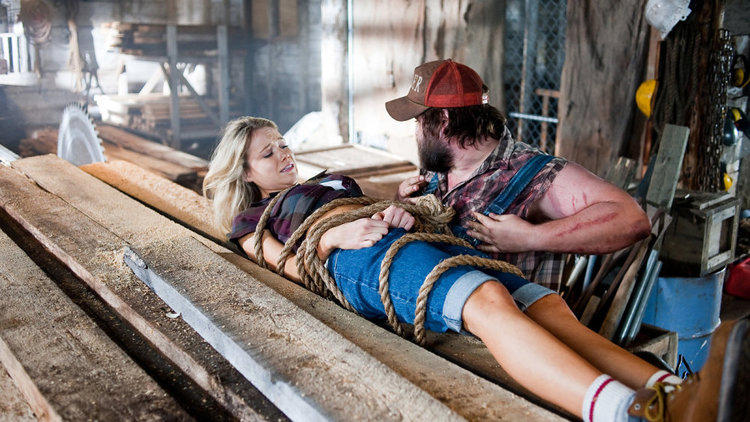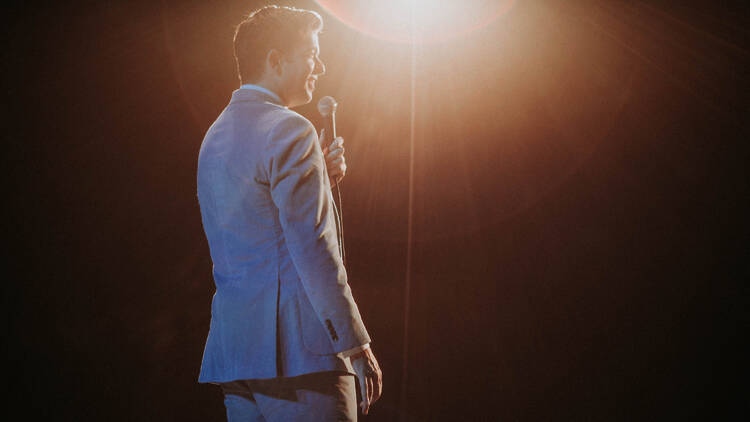Tucker and Dale vs Evil

In the vast landscape of horror cinema, where tropes often dictate the narrative trajectory, “Tucker and Dale vs Evil” emerges as a breath of fresh air—a genre-bending masterpiece that subverts expectations at every turn. Directed by Eli Craig and released in 2010, this film ingeniously flips the script on the conventional horror formula, delivering a blend of comedy, satire, and genuine heart that captivates audiences and leaves a lasting impression.
At its core, “Tucker and Dale vs Evil” presents a classic case of mistaken identity escalating into a series of comedic and gruesome misunderstandings. The titular characters, Tucker and Dale, are portrayed by Alan Tudyk and Tyler Labine, respectively, with an infectious charm that immediately endears them to viewers. They are two well-meaning but socially awkward hillbillies who set out for a relaxing vacation at their newly acquired cabin in the woods.
Deconstructing Horror Tropes
However, their peaceful retreat takes a hilariously dark turn when they cross paths with a group of college students camping nearby. Herein lies the brilliance of the film’s premise: it cleverly flips the archetypal roles of the innocent victims and the menacing hillbillies. In this narrative, it’s the well-intentioned Tucker and Dale who become the targets of fear and suspicion, while the college kids, led by the paranoid Chad (played by Jesse Moss), are unwittingly thrust into the role of aggressors.
What ensues is a series of escalating misunderstandings and mishaps, each more absurd than the last. From a simple fishing trip gone awry to a misunderstanding involving a chainsaw and a beehive, the film expertly blends slapstick humor with moments of genuine tension. Yet, amidst the chaos and carnage, there’s an underlying sense of empathy for both Tucker and Dale and the hapless college students.
One of the film’s greatest strengths lies in its ability to humanize its characters, even as it gleefully skewers genre conventions. Tucker and Dale are portrayed not as malicious stereotypes but as ordinary individuals trying to enjoy a quiet weekend away from it all. Likewise, the college students, while initially depicted as shallow caricatures, gradually reveal their own vulnerabilities and complexities as the story unfolds.
The Subversive Brilliance
Moreover, “Tucker and Dale vs Evil” offers a biting critique of the way media shapes our perceptions and perpetuates harmful stereotypes. Throughout the film, the college students’ preconceived notions about hillbillies are fueled by their own horror movie-inspired paranoia, leading to disastrous consequences. In this sense, the film serves as a meta-commentary on the horror genre itself, challenging audiences to question their own assumptions and expectations.
Another aspect of the film worth noting is its deft handling of tone. Despite its dark subject matter, “Tucker and Dale vs Evil” never veers into gratuitous violence or mean-spiritedness. Instead, it strikes a delicate balance between humor and horror, eliciting genuine laughs without diminishing the stakes or the characters’ emotional arcs.
Central to the film’s success is the chemistry between Tudyk and Labine, whose comedic timing and genuine rapport elevate every scene they share. Whether they’re navigating the pitfalls of rural living or fending off a group of misguided attackers, their friendship serves as the heart of the story, grounding the absurdity in emotional authenticity.
Conclusion
In addition to its stellar performances, “Tucker and Dale vs Evil” boasts impressive technical craftsmanship. From its atmospheric cinematography to its creative use of practical effects, the film demonstrates a clear reverence for the horror genre while simultaneously subverting its conventions. Moments of gruesome violence are juxtaposed with comedic sight gags, creating a tonal whiplash that keeps audiences on their toes.
Ultimately, “Tucker and Dale vs Evil” transcends its genre trappings to deliver a uniquely entertaining and thought-provoking cinematic experience. By flipping the script on traditional horror tropes and imbuing its characters with depth and humanity, the film challenges audiences to reconsider their preconceptions and embrace the unexpected. In doing so, it proves that even in the darkest of woods, there’s room for laughter, empathy, and maybe even a little bit of redemption.






